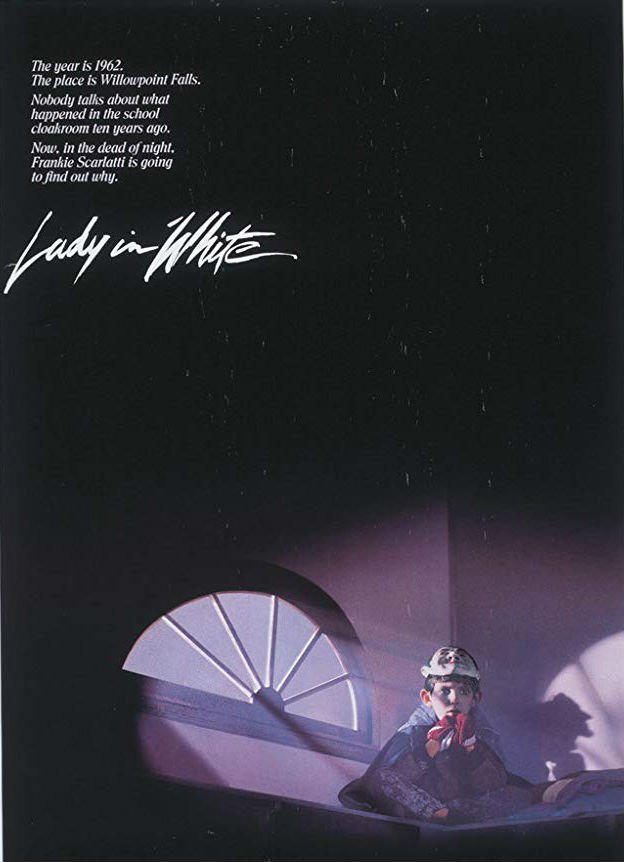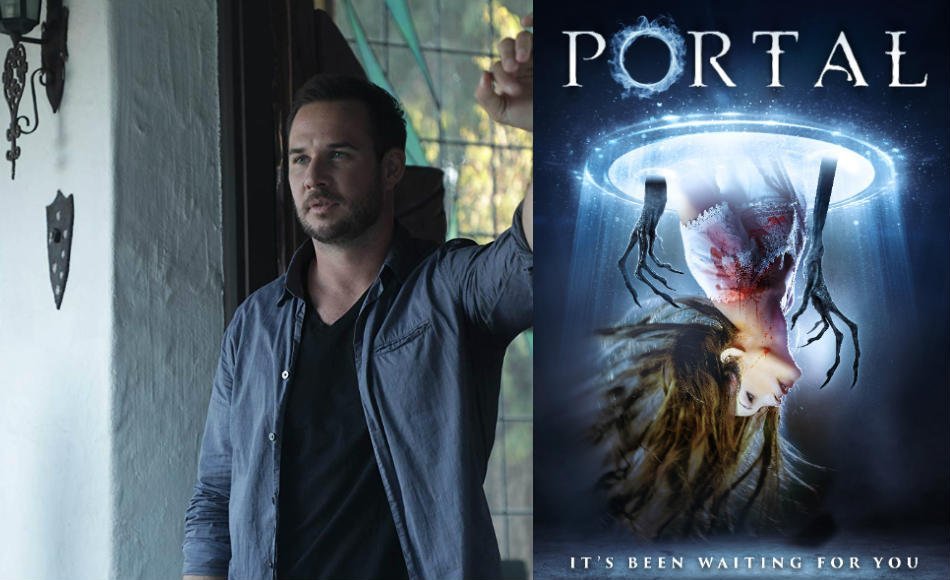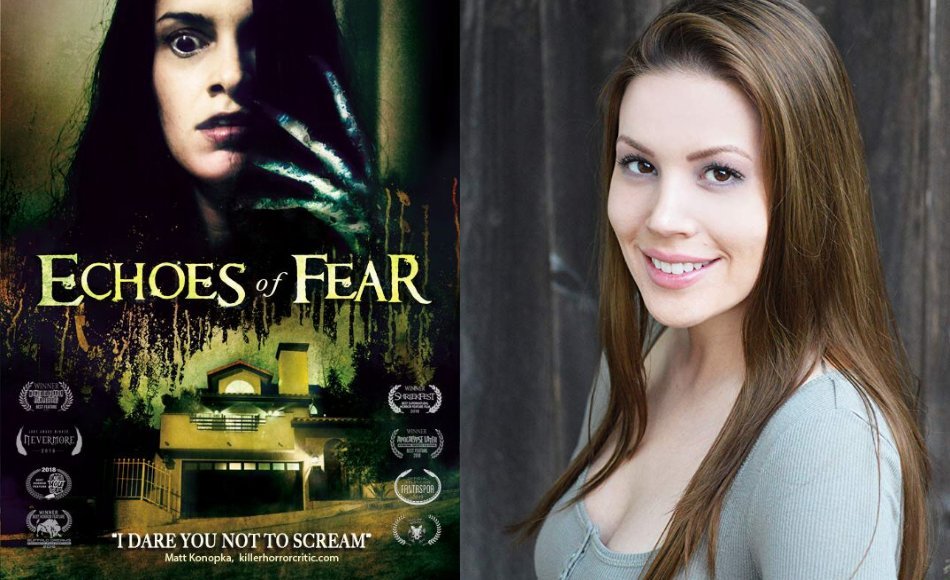Scream Factory recently announced that a bevy of their Blu-ray horror movies would be going out of print in 2020. Monkey Shines, The Dark Half, Lord of Illusions and Dolls are just a few classic horror movies going extinct—oh, and Pumpkinhead II: Bloodwings.
This is not a Disney-like tactic to lock a classic in a “vault” to drive up value; these horror movies are going out of print because the company’s rights are expiring, according to Scream Factory’s posts on social media.
Amidst the rush to gobble up the more well-known horror films, one listed title could easily be passed over: 1988’s superb ghost story, Lady in White.
Fables and folklore are the great equalizer amongst cultures and tight-knit communities throughout the world. While some are vastly different from one another, many share surprisingly common traits.
One such locality specific legend centers around a ghostly apparition known by the moniker “The Lady in White.” And there’s nary a quietly quaint town that doesn’t have their own.
But growing up in Rochester, New York, writer-director Frank LaLoggia knew only of one: The White Lady. The ghost roamed Durand-Eastman Park, never at rest, searching for her murdered daughter.
This is the tragically lovelorn concept that LaLoggia recontextualizes and builds upon for Lady in White. At the time, this contemplative gem was drowned out among the more chaotic and rock n’ roll horror movies usually found in cinemas.

A White Lady This Way Comes
First discovering Lady in White a few years ago, it managed to linger long past the roll of the credits. It has a habit of doing that every time you watch it, really.
This film critic has jokingly called it “faux-Bradbury,” but it’s said complementary and with utmost love. This horror film genuinely feels like this lost Bradbury tale, dashed with some Stephen King for an added oomph.
But while it captures the magic of all that goes bump in the night, much in the same way as Something Wicked This Way Comes manages, Lady in White is different than merely affecting the Bradbury or King wheelhouse. Lady operates akin to a fairy tale, as a nostalgic coming-of-age story.
The perfect comparison to make is that Lady is to Halloween what A Christmas Story is to Christmas and the season of All Hallow’s Eve just isn’t complete without a viewing of it.
What brings the story to life is the horror film’s autobiographical sense. LaLoggia pulls from his Italian American upbringing, even portraying the adult version of the main character in an opening flash forward.
It’s one of those horror movies about the harsh realities that surround children and how those realities come to clash with their own innocent understandings. A story of loss and grief and of adults unable to bear the weight of abhorrent violence, leaving a child to lead the sole charge in facing it.
That child is an aspiring young horror author named Frankie Scarlatti—Lukas Haas, fresh off Witness—who, one brisk Halloween night, is locked in his school’s coat closet by bullies.
As he perches himself by a high window in the closet, dressed in his Dracula costume and mask, drifting in and out of troubled sleep, a ghostly replay of past events unfolds in the room with him as he witnesses a murder (this child actor just couldn’t avoid witnessing murders).
A young girl, no more than his age, sings the appropriately titled tune of “Did You Ever See A Dream Walking?” And speaks to an unknown, and unseen, individual.

At first, the theater of bygone memory seems playful—despite the presence of, you know, a ghost—but it quickly turns into something else entirely. He watches this young girl strangled before him, viewing her every struggle and every pummel of her tiny fists to escape her attacker.
This Halloween night would set Frankie on a course that would change his life, and nearly end it.
There’s a sequence directly after this that apprises true heart of the tale. While the film always holds onto a fable, perhaps even dreamlike quality, it also grows very, very dark at times. So that heart can carry the viewer through some pretty bitter circumstances.
Frankie finds himself entering a type of ethereal realm between life and death, a state brought on after he himself is nearly killed by the unseen murderer. There, he meets the ghost of the murdered girl, Melissa.
In a scene that this film journalist believes inspired the heart wrenching third act climax of ParaNorman years later, Frankie learns Melissa is searching for her mother and yearns to be reunited, asking Frankie to help her.
And so, our young hero is burdened with a task and a promise. This promise is enough to give the film a sturdy emotional through-line by itself. But it’s what the film doesn’t call attention to that’s most striking.
Frankie helping Melissa reunite with her mother is, perhaps, a stand-in for rescuing innocence and purity itself, all while trying to solve a series of child murders that the small town has chosen to ignore.
This is not just significant as an act of righteousness unto itself. It’s significant because Frankie is haunted not just by the lost soul of Melissa but by his own grief and longing.
Frankie lost his own mother, and in reuniting Melissa with hers, he aims to give her a gift that he himself cannot ever receive. Within that, we find one of Lady in White’s greatest strengths: sincerity.
This murder-mystery is sincere to a fault, occasionally getting into hokey territory. But it’s easy to forgive such moments because they’re personal and authentically sincere, not in place as emotional manipulation.
Lady in White isn’t a simple spooky ghost flick that has a touching coming-of-age story sprinkled within. It carries meaning. And beyond this, it’s not afraid to get dirty and explore darkness even past that of child murder.
Like Legend but Less Messy
A subplot throughout the horror feature is the town pinning the murders on the school’s black janitor, Willy. This subplot is unfortunately still as relevant today as it was in ‘88 when the film was released or in ‘62 which is when it’s set.
The police even openly admit Willy is but a scapegoat. Officials are hoping to bury this horribleness once and for all because the town can’t face its own outrage and sorrow for the deaths of these children, dating back ten long years.
And Frankie, young impressionable Frankie, sees this. While never directly called out upon, the film can be impeccably subtle and never talks down to you or it’s child characters, it clearly imprints a mark in Frankie about the realities of his world. This endeavors him to his cause more.
LaLoggia isn’t afraid to take that subplot to its darkest conclusion and just let it hang there to be absorbed.
He does that amply throughout the story, with betrayals, the very notion of childhood being broken and never to be mended along with so much more. But through it all, he never lets the horror-fantasy lose its sense of wonder.
You can tell when an artist is truly putting something onto the screen that fires from every synapse of their brain, erupts from every fiber of their upbringing and utilizes all the churned-up emotion they’re capable of.
Even when it doesn’t work, it’s something special. For instance, Ridley Scott’s Legend is a mess, but one you can’t take your eyes off and Lady in White has that quality—minus the ‘being a mess’ part.

LaLoggia funded the entire production independently, practically filming day-to-day in fear of the money falling out from under him. After a disastrous time with his first film, he swore not to go the studio or investor route again.
Using penny stocks and the promise of delivering something of quality, he slowly raised enough money to keep film in the cameras. Now, no one would tell him what was what or go in afterward and alter his work.
Actors came on board because the material spoke to them, not because studio executives reached out to their agents. This underrated horror film attracted a young up-and-coming cinematographer named Russel Carpenter years before he’d team up with James Cameron on Titanic. While Lady doesn’t contain shots of Leonardo DiCaprio being old-timey handsome on a sinking ship, it’s arguably his best work.
Because of tight budget restraints, every day on set could have been the last for Lady in White. As a consequence, some of the budgetary limitations make for more a unique work.
The effects can be rudimentary, but only end up adding to this strange, otherworldly quality which aesthetically contradicts and smacks against the true real-world horror that Lady often presents. A happy accident, if there ever were one.
Some sets look as if they should be from a Grimm Fairy Tale stage play, while some of the ghost effects look all wrong for the environment. But it’s those contrasts that are so endearing because they remind us of why we love horror movies: they are a supernatural escape when we need a break from how utterly wrong the world can be. We’d all take ghosts and goblins over the real monsters, any day.
So, through pure luck and a series of miracles, production held together, and the film found itself finished. Lady in White is written, directed and composed by LaLoggia himself, an artist with a story to tell and it shows.
Hell, even the warts of the flick come from a place that’s near and dear. That’s rare.
Unfortunately, it’s as rare as a Frank LaLoggia screen credit. He wouldn’t go on to make more after Lady but not for lack of trying, and it’s a damn shame.
But perhaps, in the grand scheme of artistry, after crafting such an interesting and introspective film, one can metaphorically mic drop. The endearing horror film did what LaLoggia set out to do: it had an effect and secretly, and not so secretly, inspired other works.
Horror Movies Worth Adding to Your Collection
His filmography may be brief, but Frank LaLoggia can be proud. It’s contenting to imagine that there exists a great Horror Film Pantheon shaped suspiciously like a video store, and within that grand video store in the sky lies a Ghost Films section, and Lady in White has a display at the end of the aisle.
All because in 1988, for one spine-tingly night out at the cinema, you were treated to a vision from an artist who is truly passionate and sincere about what they’re putting out into the world.
A personal film to make, and for those who’ve seen it, becoming something personal, as well.
While it may not be for everybody, do yourself a favor and take at least one trip to the small town of Willowpoint Falls on Halloween 1962 and ask yourself, did you ever see a dream walking?
Until the new year or until it’s sold-out entirely, Lady in White is available on Blu-ray from Shout! Factory. This horror gem is currently sold-out on the website but available elsewhere, like Amazon.
The Blu-ray comes with three cuts of the horror film: theatrical, director’s and an exclusive to Shout! Factory, an extended director’s cut.
Beyond Lady in White, genre collectors may want to get all the classic horror movies going out of print before the prices increase; one can never be sure when another distributor will pick up a title







